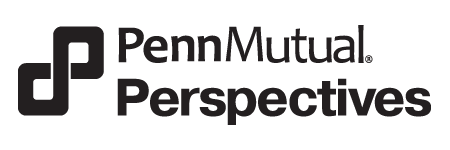Spring Cleaning – Declutter Your Financial Life
The start of spring marks not only a good time for cleaning your house and garden, but is also an opportune time to clean up your finances and get things in better order. Done right, it should make your life easier throughout the rest of the year. Your financial life will be less cluttered, and you will be able to work more efficiently.
Below is a general checklist of ways to get started:
Organize and declutter
The first place to start is to organize your financial life and, just as importantly, get rid of what you no longer need. This includes:
Paper files
Clean out your paper files, and shred everything you don’t need. People are often unsure of what they need to keep and how long to keep it, so they tend to pack it all away, and once it’s packed, they leave it there. Figure out what stays and what goes. You will be amazed at how freeing this will feel!
I also suggest scanning the documents you do need and keeping them on a flash drive, with a backup away from your house, either in a safe deposit box or in a cloud backup. This will keep everything at your fingertips. It’s very easy to plug in a flash drive or go to the cloud to reference a document before calling your home or auto insurance company.
Email
There is nothing more stressful than opening your email and finding 147 emails staring at you. Go through and decide if you need that email. Use folders to organize email so that you don’t have to see messages if you don’t need to. Each year, go through these files and clean them out.
Monthly bills
Go paperless to reduce the clutter. Use auto bill pay to save time every month. Keep an online file for any monthly bills you might need for future historical reference. Make a new file for each year with general categories, which will make tax season easier next year.
Turn “trash to treasure”
After cleaning your house in the spring, sell or donate any items you no longer need or use. If you haven’t used it in the last couple of years, you’re probably not going to use it again. Make sure you scan your donation receipt for taxes next year! Sell items through consignment shops, garage sales or online. I’ve had my best luck selling things on craigslist, Facebook and Nextdoor.
Reassess your protection
This is another area where people tend to “set and forget.” Just because the protection was the best choice for you five years ago doesn’t make it right for you now. Circumstances change.
ID protection
We tend to use the same passwords over and over again. Update your passwords at least once per year, and for banking and investment accounts, do it at least twice. Do not use the same ID or password for different accounts, and make the password at least 10 characters with capital letters and symbols to help thwart ID theft. The online world has grown increasingly important and increasingly risky. It pays to be more careful. Look at ID protection companies as a safety net.
Credit rating
Use www.annualcreditreport.com to access your free annual credit report and make sure it is correct. It is easier to challenge mistakes sooner rather than later, and you don’t want a mistake hurting your credit years down the road. Also, check your credit score. Many credit card companies now provide your credit score on your monthly bill, but you could also use CreditKarma.com. Just understand that when you sign up on the site to get your free credit score they will be trying to sell you additional services you may not need.
Review and update home and auto insurance
Make sure you’ve got proper deductible and liability coverages. With your home, make sure that your coverage is aligned with the current market value of your home. If your home has appreciated in value, you might not have enough coverage. If it has decreased in value, you might be overpaying. It also pays to do a bit of price shopping every few years to make sure you are still getting a good deal.
Learn about your disability insurance
As part of your financial spring cleaning, take time to understand your disability insurance and perhaps speak with a professional to learn if you have enough coverage for your needs. Most people think that disability only needs to be enough to replace their current cash flow, but you need to be planning for the long term. If you are disabled, will you still be on your employer’s health plan? What about saving for retirement? Most disability payments end at age 65, so it may be appropriate to include saving for retirement in calculating how much disability coverage you need. The ripple effects of a disability can be financially devastating.
Reach out to a financial professional about your life insurance
Make sure you have the proper coverage, the proper type of insurance, and the proper beneficiaries. Different types of life insurance — term, whole life, indexed universal life, etc. — are all good if they’re used in the right vein at the right time of your life. Talk with a professional and ask, “Why do I have this insurance? What is it doing for me? Do I have the right amount of coverage?” Life insurance is a lot more than just death benefit.
Lastly, making sure you’ve got the proper beneficiaries for your policies. Again, people tend to set and forget here. Do you have an ex-spouse listed as a beneficiary? A new child or grandchild that’s not listed? A charity you no longer feel passionate about? A few moments fixing things now will save a world of hurt later on.
Review and update your legal documents
First, make sure you have the following: Will, Power of Attorney, and a Health Directive. Review these annually and make sure they are still up to date with your wishes. As with the beneficiaries on your life insurance, these can get out of date.
Build Financial Efficiency
Now that you’ve decluttered your financial life and made sure that you have the right protections as a solid foundation, you can start exploring how to run your financial life more efficiently. We can all use a tune up in this area.
Review your spending
Every year I sit down and review my spending for the past year. If that seems like too big a task, try review the last three months. Take stock and set mindful goals on how you want to spend your money. It’s not about denying yourself today, but it’s about prioritizing your needs and wants both for today and tomorrow and building structure to support those priorities. Dollars spent on things that don’t give you value are wasteful.
Let me give you an example. I had a client who had taken a new sales job, which required her to travel a lot. Being in the car, driving from appointment to appointment, was causing her to gain weight. When we looked at her spending habits, it was clear that she was stopping several times a day at Dunkin Donuts. It had started as a stop for coffee, but soon she was buying bagels, donuts, and muffins. It was an easy decision for her to start bringing a thermos of coffee in her car, saving money and avoiding temptation.
There is a lot of technology that can help track spending: Quicken, Mint, Dollarbird, etc. Some credit card companies and retailers send you annual reports on your spending. Or use the tried and true envelope system– where you put aside an amount for each category of spending and, when you hit that amount, then you forego spending in that area until the next month. Make a game out of it, set goals and reward yourself when you hit your goals.
Review your tax withholding
We all love to get a big tax refund; however, the shine is off the apple once you realize that it was your money in the first place and you could have had this money working for you all year long. Over the course of your lifetime, the lost opportunity of leaving the dollars with the IRS for an entire year is huge. If you are getting a large refund every year, change your withholding.
Max your savings and investing
Between the savings from your cash flow review and the reduction in your tax withholdings, there should be additional dollars in your budget each month that need to be planned for. Make a plan to save it and invest it. Notice I did not say max out your 401(k) — that may not be right for everyone. Work with a financial professional to explore how this new money should be used, whether it’s for paying down debt, saving it in a liquid emergency fund or investing for the long term.
Review all of your investment portfolios
Make sure that the risk tolerance and investment priorities still work for you. Again, people tend to set these up and forget about them, and your risk tolerance will change as your children get ready to go to college or you get closer to retirement. At a bare minimum, rebalance your portfolio and bring it back in line with the desired allocations.
Take stock of your financial world
Lastly, once you are better organized and decluttered, take stock of your financial world. Is it where you want it to be? Do you fully understand what you have and why you have it? If not, sit down and list what changes you would like to see. Reach out to a holistic financial professional who can act as a macro manager, helping you make sense of your entire financial world and assisting you in reaching your goals.
Finance does not need to be cluttered and confusing. Let’s clean out that financial junk drawer and give your finances a chance to shine this spring!
This article is provided for educational purposes only and should not be considered financial advice or strategy. Depending on individual circumstances, the strategies discussed may not be appropriate for your situation. You should consult with a qualified financial professional about your specific circumstances and individual goals.
3089034RB_Jun22






